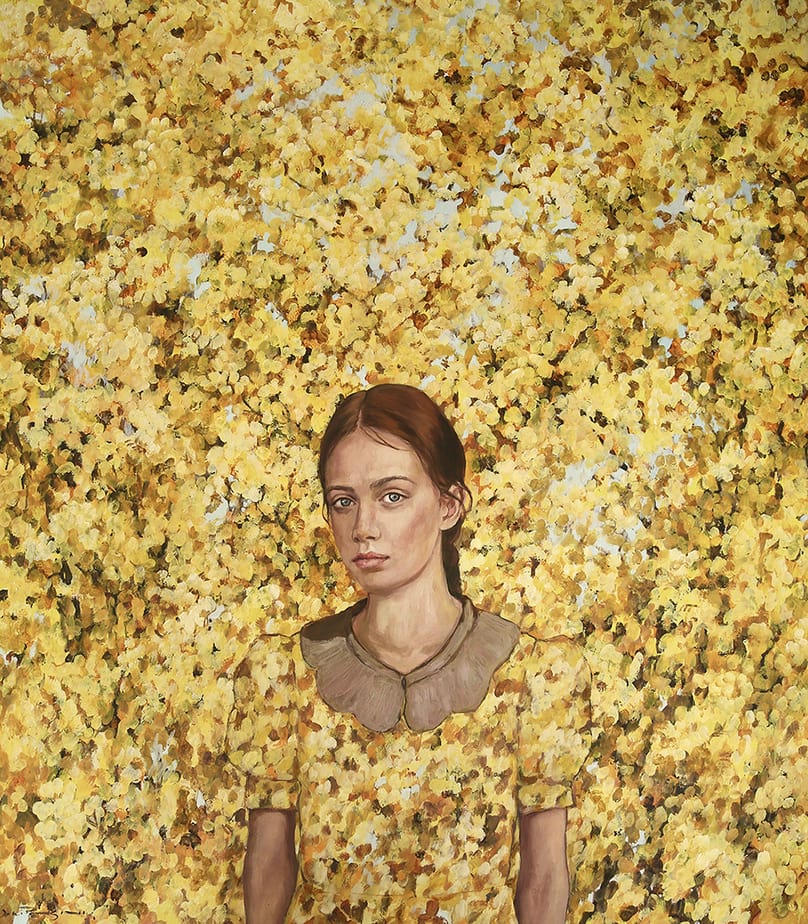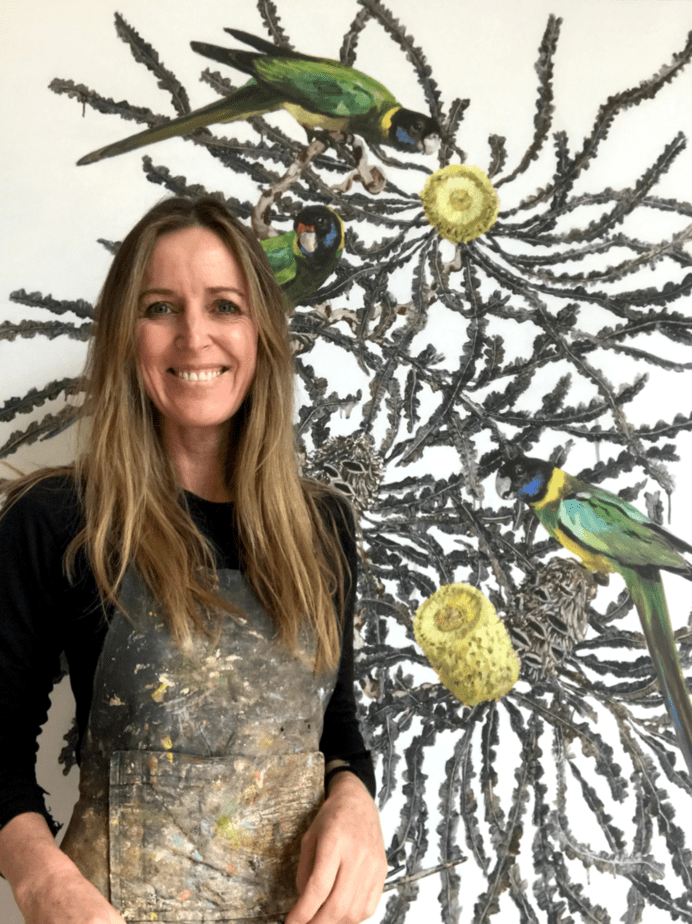Lori Pensini’s painting practice reflects the experience of living on pastoral land in remote Western Australia.
Born in 1970 in Narrogin WA, Lori spent her early adult life on the cattle station of her husband’s family in the Pilbara. She has now relocated her studio to their cattle property in Boyup Brook, Western Australia.
Driven by her connection to place and the narrative of her family, Lori's figurative practice has received significant attention in recent years, having been shortlisted for a number of prestigious prizes including the Doug Moran Portrait Prize, the Black Swan and the Kilgour Portrait Prize.
In the below interview, we share some insights into Lori's fascinating history, her family, and her studio practice.
GS: Let’s start at the very beginning. When did you decide to follow your calling as an artist?
LP: I had always found refuge in art growing up, but it wasn't considered a 'proper profession' and my family discouraged it. I guess I really reconnected and accepted the idea that it was a strength when I was 21 and had moved up to my husband’s family cattle station, Wyloo. My Aunty in England was extremely worried about the isolation and my mental health (being the only woman there), so she sent out a roll of canvas from England and implored me to ‘do something’ to stay active. Little did she know, the only day we had off was when a cyclone came through!

GS: You spent your early adult life on the cattle station in the Pilbara. Can you tell us how this experience of living on pastoral land in remote WA has informed your painting practice?
LP: The Pilbara is one of the oldest land formations in the world and undeniably, the spiritual presence belies the hardness of its crust. When I first began painting this landscape, I tried to capture the physical part, but that rapidly gave way to painting the life of it, its energy. I can't explain the longing you feel for the ancient space, it calls you. Whether it is to bear witness to the parched beauty amidst the unrelenting hardness, or the constant waxing and waning of life, it leaves a mark.

GS: Botanical & animal forms are prominent and integral to your paintings. What attracts you to this subject matter?
LP: My family are 8th generation graziers here in WA, and I have spent all my life in rural or remote settings. Plants and animals are an intrinsic part of me. When I was young, they were a way I could extend myself, to express emotion beyond who I was into that endless realm of make-believe. I believed that everything in the natural world had a language, and that they were wanting to talk to me. I spent my childhood trying to cross the language barrier and muse now that this naive ideology is the heart-beat of my art practice.

GS: In recent years, your work has begun to explore the recently discovered aboriginal lineage to your pioneering family tree. Can you tell us a litter bit more about this?
LP: Well, as I mentioned, we are generational graziers and I had married into a pastoral family, so I presumed my connection to the land was what I was experiencing in the present time. It wasn't until my mother's passing that I began to search for my biological father and discovered our colonial past and indigenous lineage to our family tree. It was a critical tipping point for me, there was an overwhelming sense of belonging, like I had come home somehow.
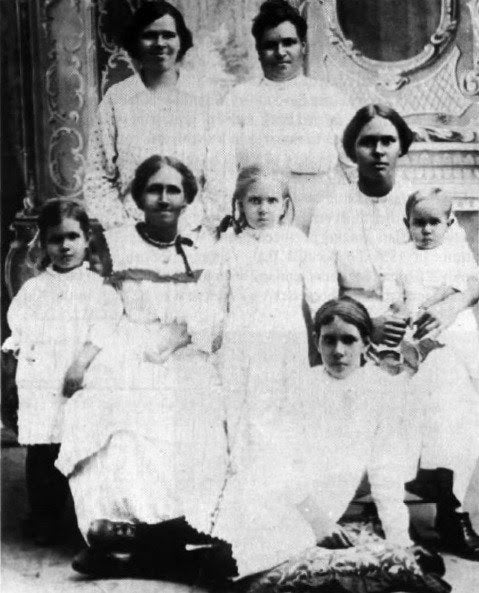
GS: You are now based in Boyup Brook, Western Australia. Can you describe the landscape that surrounds you?
LP: We farm regeneratively at Boyup Brook and have preserved large areas of natural bushland on our property. It is gloriously undulating with large granite outcrops and a natural stands of jarrah trees, wandoo, sheok, blackbutt and grass trees. What I love the most is the capacity to experience all of the seasons. Up north it was hot or cold, dry or wet, profusion or sparsity. Here you can observe the cycles of life and follow the language of the natural world more slowly.
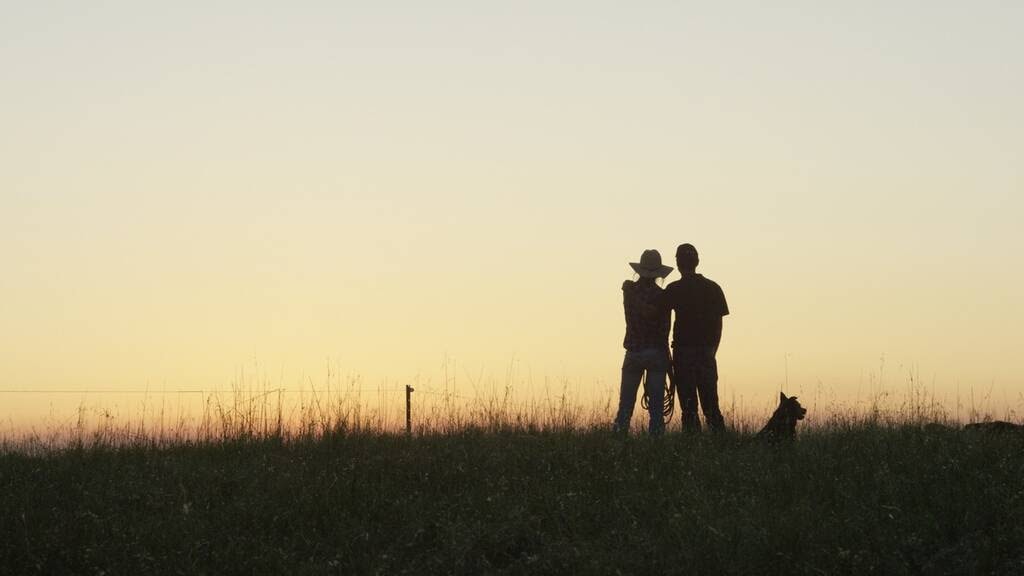
GS: Talk us through your typical day in Boyup Brook?
LP: Now I’m going to sound boring. I paint seven days a week. I start the day at my computer answering emails, imaging, researching and forming ideas or paper shuffling. I do a quick mad hour or so of chores before I hit the easel at 8.30 - 9am. My husband Warren and I take lunch here in the studio every day. It's a nice way to stay connected, catch up on whats happening on the farm, and for me, to step back and look at the morning's work and reassess. I’ll finish up at about 5pm to feed animals, get a few more chores done (are there never none?), go for a bush walk or run if the light permits.
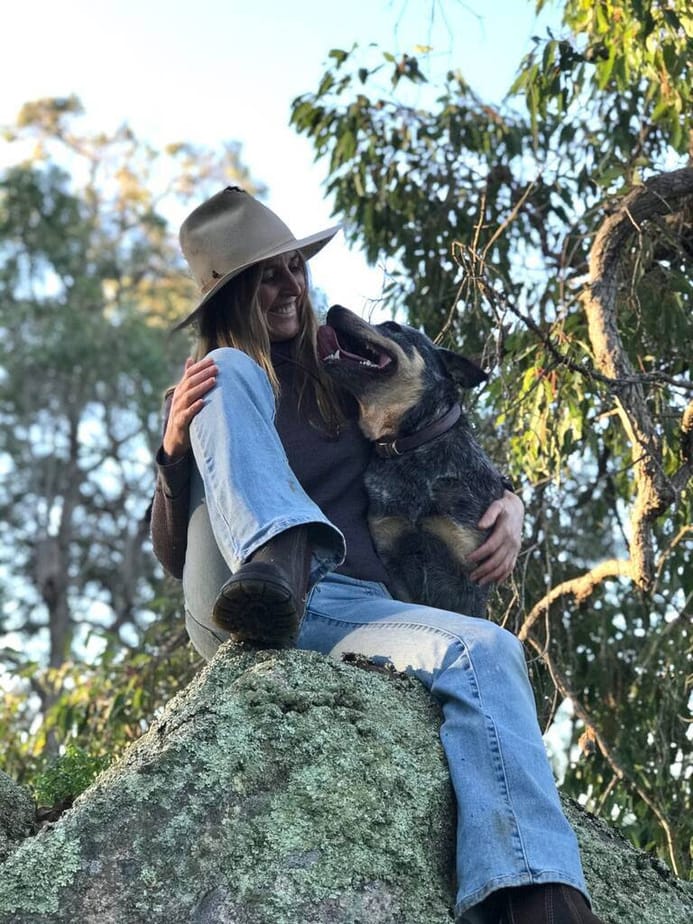
Most nights I’m back in the studio after tea, stretching canvas or backgrounding something so it is dry for the next day. My quarter horses are fat and retired and Warren, short a good pair of hands in the cattle yards. There just never seem to be enough hours in the day to fit everything in but the pull of inspiration to paint is all too compelling to deny.
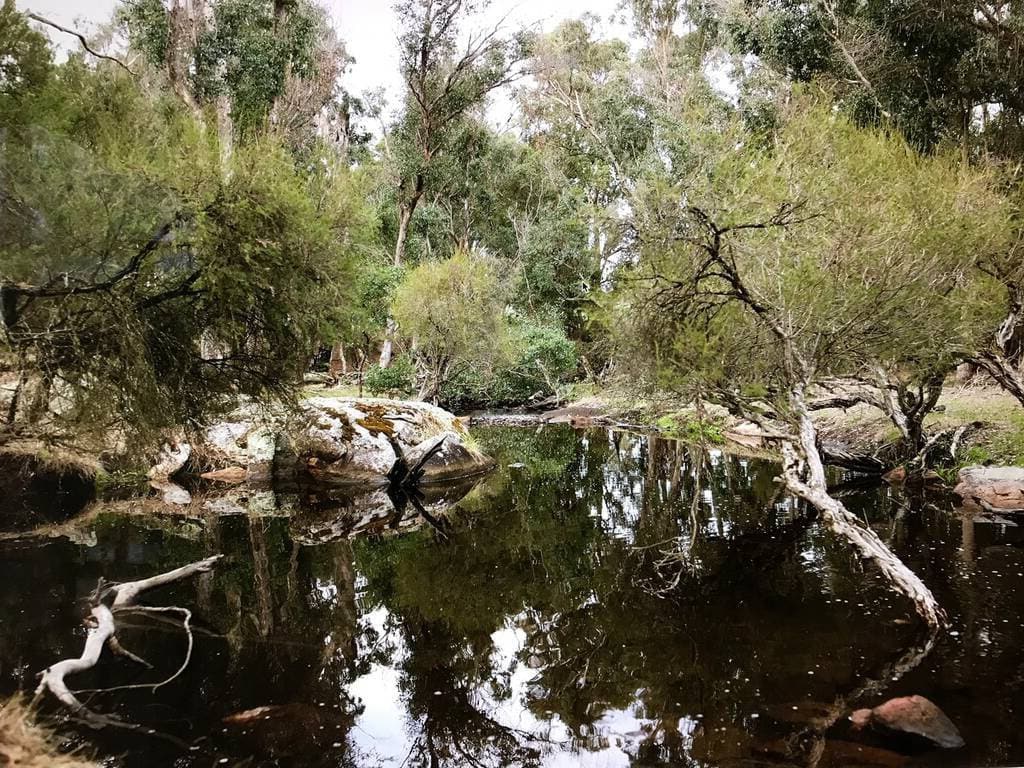 The creek that runs through Lori and Warrens farm
The creek that runs through Lori and Warrens farm
GS: Describe your studio.
LP: My studio is a 6x8m room attached to the homestead. It was important for me that I was here for my children. It works, I can wear many hats. I have a lot of natural light with two walls of windows that look out over the farm. I would love to add on another space of the same size with more space to hang works. I find it crucial when building a series to have the works out and around me to help with the flow and assess the relationship between pieces. This also helps me stay in the zone, especially when I am working an eight to ten month time frame to develop work for a show.

GS: And finally, what can our clients expect to see from this new series.
LP: They can expect to see my trademark botanical portrait combinations which are prominent. I’ve woven in a range of seasonal native botanicals and a wider colour palette this time, with the introduction of pinks, greens and blues to add to the heady yellow I usually use. Collectively, there is an underlining sense of immersion and intimacy to the works as I meander through the past and present remembrance of my family's history.
